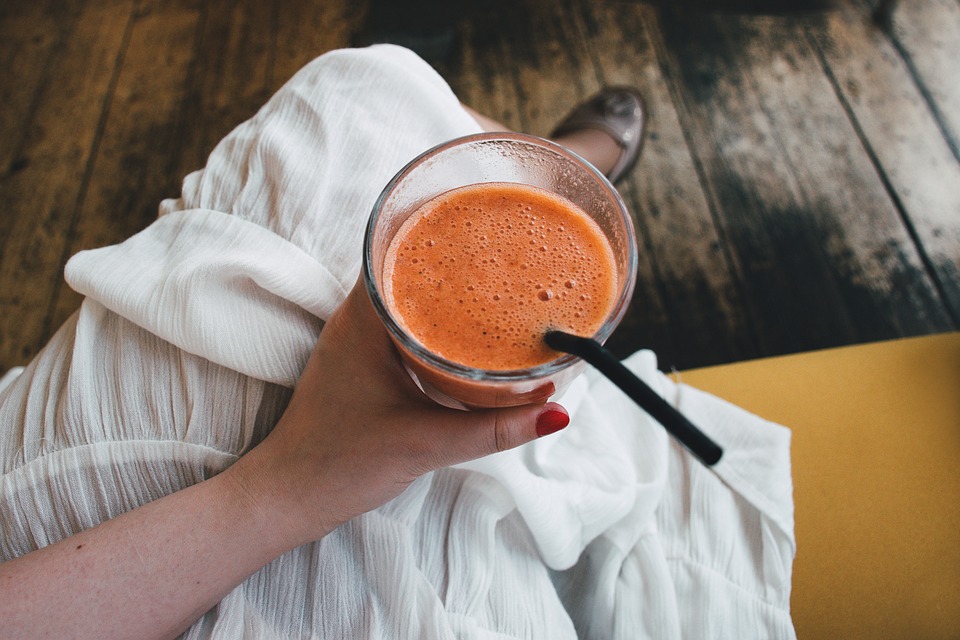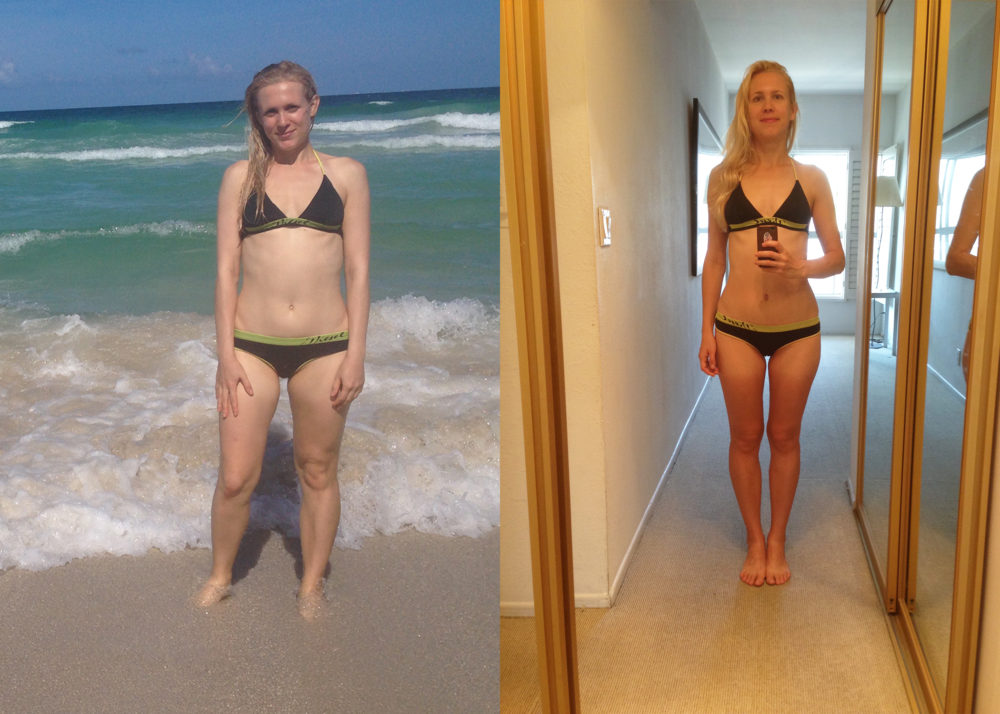Considering intermittent fasting? I tried it for two months, and my intermittent fasting results went beyond mere weight loss.

Just a little disclaimer, I’m not a doctor or nutritionist or any type of health care professional by any means. Just a gal whose mission for the past three years (or is that a decade?) has been to get to the weight where I feel comfortable, happy, and confident with my body. What lofty goals–I know, right? I was at my heaviest over three and a half years ago when I decided to go vegan and thought that weight loss was going to be an effortless byproduct of eating a whole-foods, plant-based diet. But that hasn’t been the case for me.
I wanted to lose around 33 lbs because that was the weight I remember feeling my best at. Well, three years and three months later, I was down 22 lbs and was generally happy with how I looked but still not where I wanted to be. There seemed to be a persistent layer of fat around my whole body, particularly around the stomach area, that prevented me from getting that lean look I desired. I did running, cycling, yoga and went to the gym, never pushing myself too much with any one of those, but just keeping active because it felt good and was a great way to stay healthy. I wanted something I could sustain for life, not just reach a goal for a split second and then be disappointed when I could not maintain it.
Recently after turning 30, I decided to do a little research on intermittent fasting to see if this was something I could incorporate into my life. According to Mark Mattson of the National Institute on Aging, fasting has been proven to “improve biomarkers of disease, reduce oxidative stress and preserve learning and memory functioning.” For those of us interested in more external benefits, Dr. Monique Tello, M.D., M.Ph. of Harvard Medical School says that “IF is safe and incredibly effective” for weight loss. In fact, “new research is suggesting that not all IF approaches are the same, and some are actually very reasonable, effective, and sustainable, especially when combined with a nutritious plant-based diet,” according to Dr. Tello.
All that was now left for me to do was pick the protocol that fit my needs. There was the 5:2 method that involved eating as usual for five days per week and restricting your calories to 500 for two days per week, a popular method in the bodybuilding and fitness industry. Then there was the 16:8 method that involved fasting for sixteen hours per day and eating your usual amount of food during an eight-hour window, which was a lot more appealing and realistic for me—because guurl, I like to eat and am not interested in calorie restriction.

On the left is me this June 2017 and the right is September 2017.
My Intermittent Fasting Results
What I’ve had to do is basically nothing. I eat my first meal of the day around noon and finish eating dinner by eight, the rest of the time I am fasting. During the sixteen hours of fasting, I end up sleeping for half of that time and the rest of the time I do yoga in the morning on an empty stomach (I have always worked out on an empty stomach) and get on with my day.
What I’ve been eating is a whole-foods, plant-based diet–meaning I don’t eat vegan junk food and keep each meal very simple, fast, and easy, requiring minimal prep time but still totally delicious. My total daily calories amount to around 2,000 per day, give or take, and for a 5’8 woman who is not especially active, that is entirely adequate. I do have a matcha latte or a coffee occasionally in the morning during my fasting time, but I mostly try to just drink water during that period. Some people have a different time gap–say from ten to six or eleven to seven; I just personally prefer noon to eight.
Fasting is hard for the first couple of weeks, and it took some discipline to get my body used to the new routine, but now I don’t crave breakfast and actually feel a lot more energetic and able to get things done. I am more clear-headed and focused in the mornings when my energy is not going towards digestion.
Weight loss has not been significant. I have lost a couple of pounds, but what I have definitely noticed is that my body composition has been changing to look more toned and lean, which is my main aim at this point. I am less puffy and bloated in the mornings and am finally starting to make out a bit more muscle definition all around my body.

My mood has improved particularly in the morning, I don’t know the exact science behind this, but I have definitely noticed that I generally have a more positive outlook on life than I did a couple of months ago.
Looking younger has also been a surprising side effect that I’ve noticed. I don’t know if it’s because my skin has been clearer since doing this, but I do think the fine lines I had before are even finer now. When I was researching this, I found that there have actually been studies that showed that fasting helps to increase HGH (human growth hormone) levels, which is the hormone that regenerates your body and keeps it looking young as well as having a whole host of other benefits for maintaining a healthy body.
What I’ve found so far is that it has been a sustainable daily practice that I will continue doing. The benefits that I have listed above I’m sure will only continue to grow as time goes on. I am excited to experience future intermittent fasting results and feel like this is what’s going to get me over that final hurdle to the body that I always desired.
I hope that this has been useful to you and maybe something you will consider doing yourself if you’re struggling to get a bit more toned. Let me know if you have any questions about this lifestyle; I will be happy to discuss my intermittent fasting results and what I have learned so far!
Have you ever tried fasting? Have you experienced any exciting intermittent fasting results?
Related: What I Learned From Doing A Fasting Retreat, Eating 800 Calories A Day
Always Hungry On A Vegan Diet? 3 Ways To Feel Full & Have Energy For Days
From Fat Burn To Focus, The Perks Of Intermittent Fasting Are Insane. I Tried It
Get more like this—Subscribe to our daily inspirational newsletter for exclusive content!
This article was first published on September 7, 2017 and most recently updated on September 22, 2019.
__
Photo: Pixabay, Anna Redko




